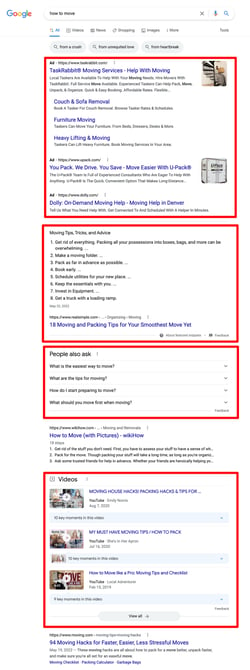 People often forget just how much the format of Google search engine result pages (SERPs) have changed over time. I noticed it in particular recently, when I was planning out a house move. I Google searched “how to move”, and saw the following:
People often forget just how much the format of Google search engine result pages (SERPs) have changed over time. I noticed it in particular recently, when I was planning out a house move. I Google searched “how to move”, and saw the following:
- A giant block of ads (of course 😆)
- A large “featured snippet” module, where Google pulls key highlights out of a web page and shows them directly in the search results with no click needed
- A “people also ask” module showing answers to similar questions
- One “traditional” web page link
- A video module showing several YouTube videos, with key moments highlighted
- One more “traditional” web page link
What a change from the “10 blue links” of the old-school Google search results!
What is really shocking is that even if you have the “number one” search result ranking in the traditional sense for a search like this, you’re still buried more than a full screen length below the fold on a typical laptop screen. If you have the “number two” spot, you’re literally at the bottom - where number 10 used to be.
It is clear that the traditional “search ranking” mindset is completely irrelevant in search queries like this. Unfortunately that is still the mindset so many businesses and marketing leaders still have when evaluating their search visibility.
It doesn’t help that an entire generation of SEO reporting tools are still built around traditional “rank tracking” like this as well.
How to tackle this
If I was trying to get website traffic for people searching for something like “how to move,” here’s what I would do:
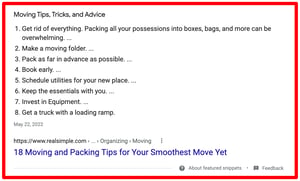
Featured snippet
I would first write a "how to move" article in a with numbered subheadings (H2s and H3s) to make my page more attractive to Google for the featured snippet. BUT I would not spend a lot of time agonizing over this, since the featured snippet is such a winner-take-all module."People also ask"
I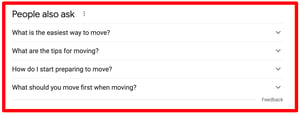 would look at the questions in the “People also ask” module and write separate pages answering each one of the questions. Unlike the featured snippet, this module shows multiple questions and thus has multiple opportunities for you to show up. The question list even increases as users click into them! Lots of potential here.
would look at the questions in the “People also ask” module and write separate pages answering each one of the questions. Unlike the featured snippet, this module shows multiple questions and thus has multiple opportunities for you to show up. The question list even increases as users click into them! Lots of potential here.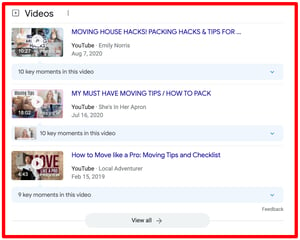 Video module
Video module
If at all possible, I would try to make several YouTube videos addressing the same or similar questions in the “People also ask” module. I would also add in-video chapters in each YouTube video as well, to encourage Google to find and highlight key moments in the video module. Each of these videos would be an opportunity to be featured with a big full-color spot in the video module.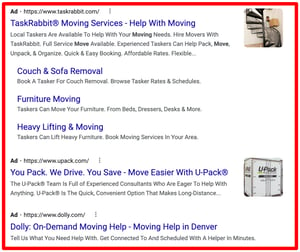 Ad pack
Ad pack
I would probably NOT run a paid search ad for this. A search query like “how to move” is very research-focused rather than transaction-focused. I would save my ad budget for the people searching more transactional queries such as “good moving companies” or “moving services near me.”
In summary
“Wow Chris,” you might say, “that sounds like a ton of work!”
And it is! That’s the reality of search engine optimization in 2022. You can’t just throw up a quick and easy article and pound it with a bunch of spammy links like you could 10 years ago. People have been pushing enormous amounts of content and links onto the internet for decades now. Many of the easy wins are gone nowadays.
For many companies, putting lots of effort into SEO might no longer be a good use of their money and they might be better off focusing elsewhere.
For other companies (including ours), SEO is still a valuable driver of business and worth investing in. BUT you need to go in with the right expectations: it will take a lot of work, and your mileage will definitely vary. What works for one company might not work for another. As long as you approach it with that mindset, you will save yourself a lot of unnecessary anxiety and you will be in the right headspace for the long-term journey.
